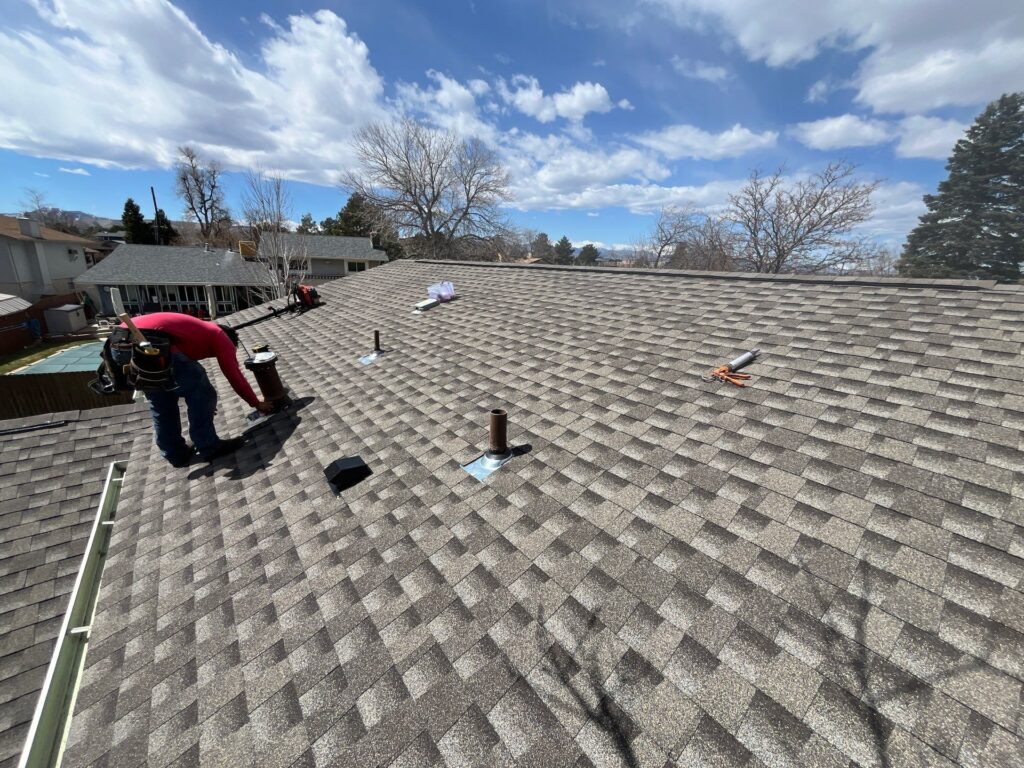
When choosing a roofing material, cost and ease of installation often make asphalt shingles the first choice. However, there are significant disadvantages that homeowners must consider before making a decision. While these shingles remain popular, their weaknesses in durability and sustainability make them less appealing for those seeking long-term value.
Shorter Lifespan Compared to Other Roofing Materials
Asphalt shingles typically last 15 to 30 years, which is considerably shorter than roofing alternatives such as metal, slate, or tile, which can last 50 years or more. The shorter lifespan means homeowners will face roof replacements more frequently, leading to recurring expenses over time. Unlike more durable materials, asphalt shingles are prone to cracking and curling under intense sun exposure, premature deterioration in extreme heat or cold, and color fading from constant UV radiation. Frequent replacements make asphalt shingles less cost-effective in the long run, despite their lower upfront price.
Vulnerability to Harsh Weather Conditions
Asphalt shingles are highly susceptible to weather damage, which can quickly compromise the integrity of a roof. High winds can lift shingles, exposing the underlayment and causing leaks. Hail damage often results in cracks, granule loss, and holes that weaken the roof. Heavy rain and moisture increase the likelihood of leaks and mold growth. In humid climates, algae and moss can thrive, staining shingles and accelerating decay. For homeowners in regions with frequent storms, these vulnerabilities translate to constant roof repair costs and ongoing maintenance.
Environmental Concerns and Waste Impact
One of the most overlooked disadvantages of asphalt shingles is their environmental footprint. Roofing materials, especially asphalt shingles, contribute significantly to landfill accumulation. With frequent replacements, the waste volume adds up quickly. Their production requires petroleum-based materials and considerable energy, making them less eco-friendly. Unlike metal or tile, asphalt shingles have limited recycling options, which reduces sustainability efforts. For environmentally conscious homeowners, these factors make asphalt shingles a less desirable choice compared to greener alternatives.
Long-Term Costs of Asphalt Shingles
Although asphalt shingles appear budget-friendly upfront, hidden costs emerge over time. Homeowners face ongoing repair and maintenance bills, premature replacements every 15–20 years, insurance claims from storm damage, and an overall increased total cost of ownership compared to more durable roofing solutions. These costs often outweigh the initial savings, leaving homeowners with a higher financial burden over the long term.
Making the Right Choice for Your Roof
Selecting the right roofing material should balance affordability, durability, and sustainability. While asphalt shingles may work for short-term budgets, they are not the most reliable option for long-term protection. For those seeking durability and fewer repairs, alternatives such as metal or tile roofing often prove to be a better investment. If you’re searching for trusted roofers in Denver, consider Tried and True Roofing in Denver, Colorado. They provide expert guidance on material choices, ensuring your home has a roof that lasts.
Conclusion
Asphalt shingles remain popular because of their affordability and easy installation, but homeowners must weigh the trade-offs carefully. The shorter lifespan, weather vulnerability, and environmental impact make them less appealing for those who want lasting value and eco-friendly options. Exploring alternative Denver roofing materials can save money and provide stronger protection over time.